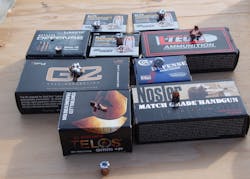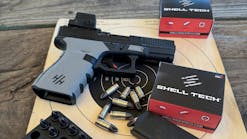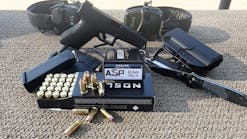Side-by-Side Comparison: 9mm Calibers
My friends all know that I have an unusual sense of humor. Occasionally, I will go to a gun store or the range and strike up a conversation that begins with, “The best caliber for a handgun has to be_______”. After that, I just sit back and watch the fireworks begin. It only works on strangers. The truth is, the ability of a cartridge to stop a threat is only a factor, not the factor.
There really isn’t a “best cartridge” for duty use, although some are definitely better than others. Some perform very well in some areas like accuracy, but fail when fired into media. Others do well in some areas, but lack reliability or produce a significant flash at night.
The best cartridges are usually from the companies that vet them in more than just a handful of circumstances. For example, some of the ones I have tested do well in a 4 inch barrel, but if the user uses it in something shorter, the results are disastrous.
Years ago, I tested a cartridge that really performed in standard testing. That is, the bullet penetrated the requisite depth in media, and expanded satisfactorily. It was accurate and reliable. When I shot it in another gun, with a barrel a mere half inch shorter, it failed to expand because it travelled nearly 100 fps slower.
This loss in velocity was a danger to the public. You see, the lack of expansion caused it to travel through two of my blocks (24 inches) and out the other side. Selecting a cartridge is not the goal. Agencies must look at integrated systems.
Ideally, a bullet should penetrate between 12 to 18 inches in ballistic gelatin for maximum performance. Traditionally, full weight retention of the bullet when it comes to rest is considered ideal. Bullet manufacturers use various methods to hold them together, like cannelures, bonding and even epoxy. Most of these methods work. For example, the Hornady, Colt, and SIG SAUER bullets have aggressive cannelures and Hornady even uses an Interlock Band. They stay together, even when fired through barriers. Speer Gold Dot bullets use a bonded core, which produced 100 percent performance in our tests.
Read the Full 9mm Test and Review.
| Company (grain options tested) | Inches in Gelatin | Inches After Barrier |
| Sig Sauer Performance Ammunition (115, 124, 147) | 13.5 (115 grain) 14 (124 grain) 15.7 (147 grain) |
13.5 (115 grain) 10.5 (124 grain) 11 (147 grain) |
| Speer Gold Dot G2 (147) | 13.5 | 10.5 |
| Hornady Critical Duty (135) | 17.5 | 14.5 |
| Liberty Ammunition Civil Defense (50) | 2.5 to 10.5 | 3.5 |
| G2 Research Telos (92) | 10.5 | n/a |
| Colt Defense (124 JHP) | 13 | 8.5 |
| L-Tech Ammunition (124) | 13 | n/a |

Officer Lindsey Bertomen (ret.), Contributing Editor
Lindsey Bertomen is a retired police officer and retired military small arms trainer. He teaches criminal justice at Hartnell College in Salinas, California, where serves as a POST administrator and firearms instructor. He also teaches civilian firearms classes, enjoys fly fishing, martial arts, and mountain biking. His articles have appeared in print and online for over two decades.



